H/T Latisha Jenson, Willamette Week
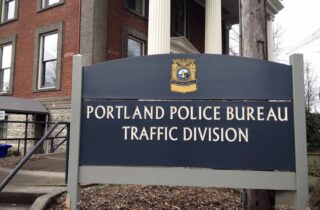
(Photo: J. Maus/BikePortland)
In the first eight months of 2020, Portland Police Bureau (PPB) officers made 20,990 traffic stops. According to police data, between New Year’s Day and August 1st, 17.7% of the people stopped were Black — a significant overrepresentation of Portland’s Black population which was 5.8% as of 2019. Over the same time period, 64.9% of those stopped were white, a number that underrepresents that demographic by by over 12% (whites make up about 77% of Portland’s population).
Between April 1st and August 1st, Black people accounted for 12 of the 57 people (21.2%) stopped by the PPB who weren’t driving.
These numbers come to light less than a week after police in Kenosha, Wisconsin shot Jacob Blake seven times in the back as he stood in the street outside his SUV and amid a tense public dialogue about systemic racism and nightly protests against racist polices and police brutality.
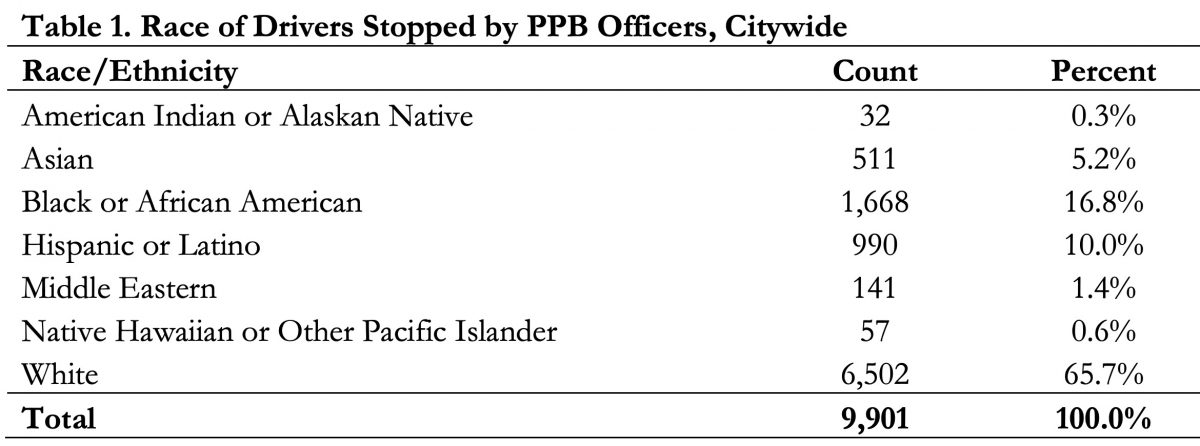
Traffic stops have also come under intense scrutiny from transportation advocates because they are the most common way people come into contact with police officers and research has shown racial bias often comes into play. We’ve watched videos in horror far too many times that show officers using excessive, often lethal, force against Black drivers.
Yesterday, after several NBA teams announced they wouldn’t participate in playoff games to show support for Black Lives Matter and Jacob Blake, former Portland Trail Blazer Maurice Harkless shared a personal story on Twitter about an experience he had with a police officer while driving in Portland. The officer pulled him over and treated him brusquely for no apparent reason, only to change his attitude upon learning he was a famous athlete.
Advertisement
Back in July the Portland Bureau of Transportation ended a long traffic enforcement partnership with the PPB out of concerns that the stops could not be done equitably and it was fear of racial bias that led PBOT’s Vision Zero Task Force to not prioritize increased enforcement as part of its official recommendations in 2015.
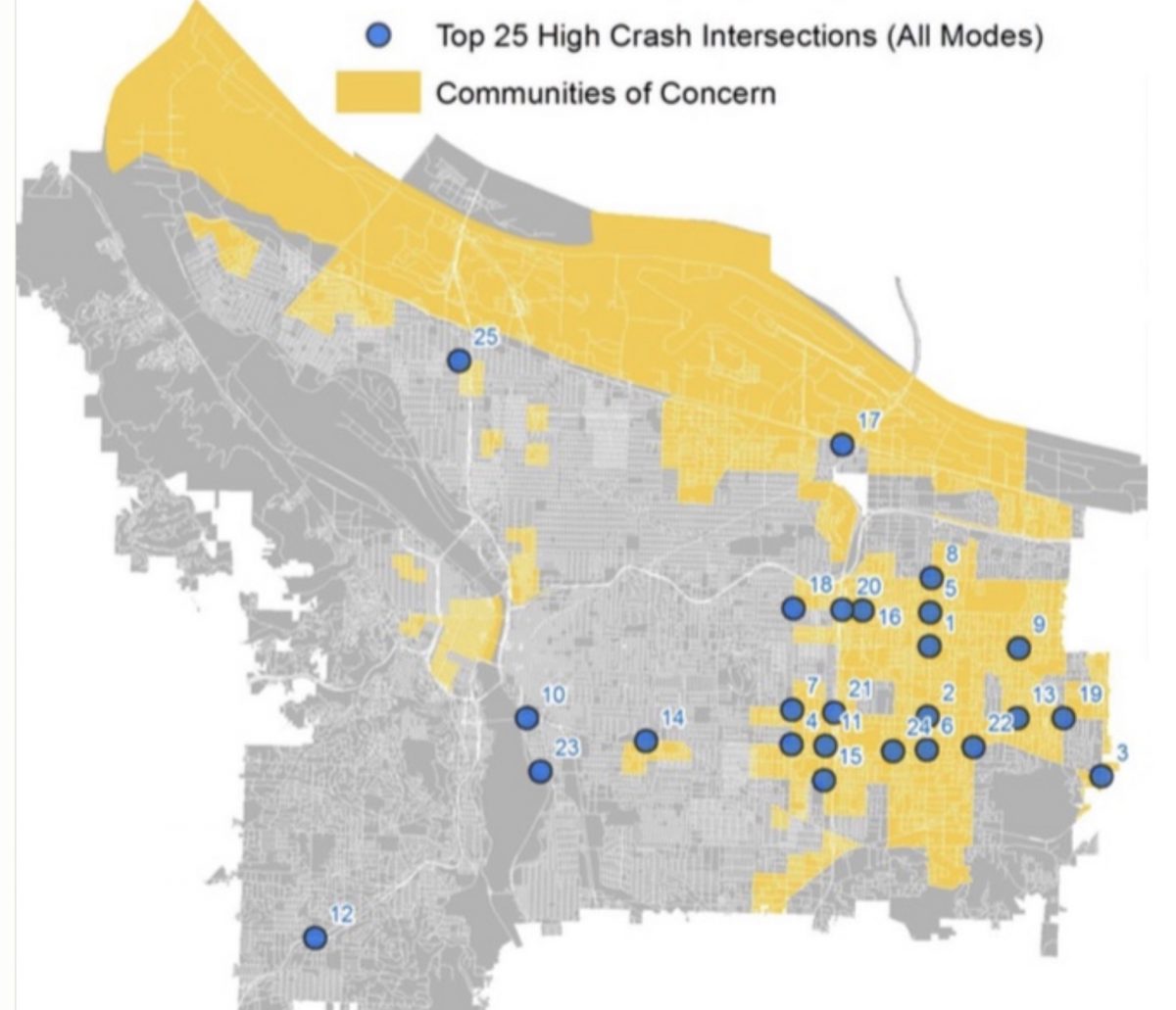
The stops data also shows that PPB Traffic Division officers were responsible for 56% of all traffic stops between January and August of this year. In 2018, former Traffic Division Captain Michael Crebs told the Vision Zero Task Force that the disproportionate rate of Black drivers pulled over was likely not only a sign of implicit bias but also due to the fact that, statistically speaking, the majority of PBOT’s “High Crash Network” intersections are located in communities with an above-average rate of people of color (and other “equity indicators”). “I want to go out there and give the level of enforcement I want, but I don’t want to over-police. It’s hard to know, where is that balance? If I don’t send my officers out there to engage in enforcement, then we don’t care. If we enforce too much, then we’re over-policing.”
“Everyone in this room has implicit bias, but the three officers in this room have a higher threshold because we have the authority to seize you and your property,” Cpt. Crebs continued. “… I have to wash that stuff out of my brain as best I can… and I know I can’t completely rid myself of that.”
There’s been a push in some cities to take traffic stops out of police hands. I’m not aware of similar efforts in Portland. Asked about it at a recent budget meeting, PBOT Director Chris Warner said it’s a question for the city’s government relations staff. He referred to citations given by automated cameras and the existing state law that requires a police officer to observe and sign off on each one of them.
Take a closer look at PPB traffic stop data on their website.
— Jonathan Maus: (503) 706-8804, @jonathan_maus on Twitter and jonathan@bikeportland.org
— Get our headlines delivered to your inbox.
— Support this independent community media outlet with a one-time contribution or monthly subscription.


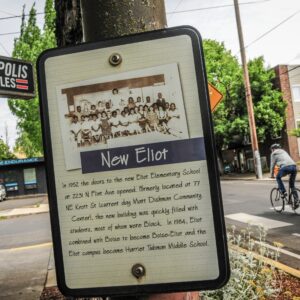
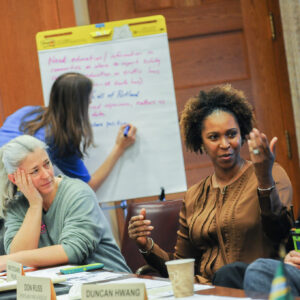
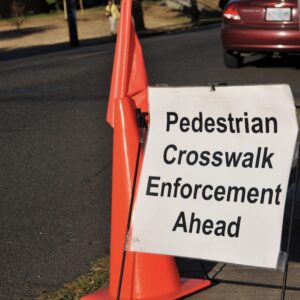
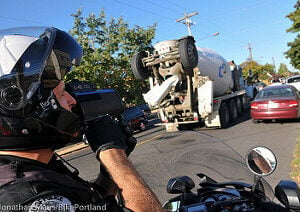
Thanks for reading.
BikePortland has served this community with independent community journalism since 2005. We rely on subscriptions from readers like you to survive. Your financial support is vital in keeping this valuable resource alive and well.
Please subscribe today to strengthen and expand our work.
TL;DR – not all disparity is due to racism.
I’m just going to throw this out there…perhaps a community that has been generationally hassled by the law has less respect for the law. Expecting equal outcomes based solely on population makeup does not allow for any kind of diversity in culture…and some cultures/groups may take very different viewpoints to what a societal norm or expectation is. This is in no way suggesting there is not some bias – I believe there is. But not all variance can be attributed simply to bias.
I would ask my more Progressive friends: What should the percentages be?
yikes, dude.
So let me ask you this – should minorities ever be pulled over?
Biiiiiig yikes!
Even the police admit to the bias. Blacks were pulled over way more often, but whites were far more likely to have illegal contraband found by the police (the percentages for American Indians was even higher.)
Remember, the police don’t need to look into your car to see who is likely black versus white, all they have to do is read your license plate and pull up the extensive data on their computers.
Sure – just saying not every stop is due to bias. Obviously, white people are getting pulled over too. If the bias was as profound as many Progressives believe, ONLY black people would get pulled over. I’m simply stating that not every stop is due to bias.
“every stop is due to bias” is a strawman and obviously not what is being argued.
Would you be okay if the percentages were off by the same amount in the other direction?
I’d say it was worthy of analysis.
I think the answer is: EVENTUALLY, when (and I hope not “if”…) we work towards balance out all the grand inequalities among races in America, it should align to demographics. But I hear ya, this stat is sort of a trailing measure. BIPOC people generally have less wealth, which puts them more in east portland, which if you haven’t been there lately doesn’t quite look like Ladd’s Addition. 122nd is nothing like Reed College Place.
I was following a similar story about the county grew up in, where they were looking at rates of different races being suspended in schools. The knee jerk reaction was “those racist teachers!” And while I am 100% sure that teachers aren’t perfect and could put in real effort to stamp out any bias they carry, that stat was another trailing event from systemic racism. In that county, sadly like most of America, white people were almost across the board in a better station of life than others, and all the stability and lower ACE scores that go with that led to lower suspension rates.
I agree with nearly everything you said. Personally, I think the telling statistic is usually poverty.
You could possibly calculate the “ideal percentages” by normalizing population statistics by violation rates (for example, young people tend to drive more recklessly) and rates of driving through areas that are patrolled more heavily due to having dangerous traffic conditions.
Ironically, people would be just fine with showing particular age groups behave differently than others. But there is a hesitancy to agree with it when there are cultural or “race” differences. I am just not a fan of univariate explanations when it comes to behavioral issues.
It is true that all disparity is not due to racism. And you’re right in that we need to look for the source of disparities in places we might not first suspect if we want to address them. But I think you (and Tom Sowell and Coleman Hughes, whom it sounds like you’ve been listening to) jump too quickly to explanations of purely cultural origin or individual responsibility; many of the cultural/circumstantial considerations they and you (seem to) allude to developed as a result of racist policy. I think you can pretty easily trace attitudes, behaviors, and outcomes around law enforcement, the justice system, education, crime, drugs, wealth, and health to the development of environments without good access to stability, education, jobs, credit/capital, police protection (yes), and too much access to the stick end of the justice system. The insight you and Sowell and Hughes bring is that y’all are right that if you look at white people and black people who experienced the same environmental factors listed above, their culture and behavior and life outcomes look very similar. The problem is that more black people as a proportion of all black people live and lived under those conditions than white people, and that is intentional.
The import of pointing out the deep origins of race-based disparities is not that the solutions are necessarily race-based (though they may be that) but that those complicit in creating the disparities in all their depth should be held responsible for righting the wrongs—wrongs whose magnitude far exceed the threshold for what I think is acceptable for disparities in outcome based on “diversity in culture”.
Back to the disparity in black people being stopped by police, we can use this orientation to dig a little deeper and maybe feel less bad about asking questions relating to culture:
Do officers have bias? Likely.
Are certain parts of town policed more? It seems so.
Are black Portlanders more likely to be in those parts of town? It seems so.
Are black Portlanders more likely to be in vehicles that are out of compliance with the law? Given this seems likelier for those with lower incomes who may be unable to maintain their vehicle/tabs and that people of color have lower incomes on average in Portland, this seems likely.
Are black Portlanders more likely to be outside of a vehicle (and thus more visible to law enforcement)? Not sure, though the income correlation seems to me to suggest as a population they would be more likely to be outside of a car than Portlanders in general.
Do black Portlanders travel more often or greater distances than white Portlanders, increasing their exposure? Unsure. If we accept that many black Portlanders have moved to The Numbers and retain ties in Albina, they may be traveling further than your average/white Portlander.
Are black Portlanders more likely to commit crimes? I’m not finding a quick reference for Portland. As a proxy, nationally 52% of people arrested for commission of violent crime were black (1980-2008) and 27% of people arrested overall were black (2016).
All of these are reasons there might be a disparity in the number of interactions with law enforcement. Some reasons suggest solutions that are specific to race, some solutions that are about geography, some solutions that are about income, and some solutions that might be about communities/culture—though research on crime commission suggests it is but a sliver of the population committing violent crimes, not a culture that tolerates or encourages such behavior.
I do appreciate you (indirectly) bringing up the question “how much disparity should exist or is warranted?” and causing us to think more rigorously about what a disparity might actually be indicative of.
Kana, thanks for your thoughtful response and I promise I will read it again. For the record, I have no idea who Tom Sowell or Coleman Hughes are.
The last sentence of your first paragraph is exactly the issue – I completely agree that assertion.
I will also say I truly appreciate your academic approach to things as compared to overly emotional thinking.
I hope you mean Kana!
Over all people are about equally law abiding, so yes I would expect the stats to be relative to racial distribution. POC are not less-law abiding, they are over policed. They are more likely to be stopped than white people, more likely to get a ticket and more likely to be given a harsher sentence than a white person. The only way to find out what the impact of over policing is on POC would be to, well stop over policing them and the whole point of the recent protests is to do just that.
The data does not support this conjecture. There are huge differences across various demographic groups (gender, race, age, wealth, geography) that cannot be accounted for by differential policing.
How can you know that? Is there some sample group where you can say bias in policing does not exist? My “conjecture” is based on this fact; white and Black Americans use drugs at roughly equal rates, yet the arrest rate for drug crimes is far higher among Black Americans. It stands to reason that this same bias is true across the spectrum of illegal behavior. Which means that if policing in Portland was non-biased then ticket rates would roughly correspond to population representation. It would be interesting to look at the citations rates for various ethnic groups by red light cameras because I am willing to bet that they are a lot closer to representation than police stops.
Look at the stats I posted below for a probably-not-too-biased proxy for dangerous and/or illegal driving in Portland, which refutes your claim (and I know that similar data exist for gender and age differences). I am open to considering other data if you have some to share.
Standard disclaimer: I am NOT claiming the police are unbiased, or that there are not differential outcomes based on race. I am NOT claiming that our system of justice is working acceptably. These stats tell you NOTHING about an individual driver. Your mileage may vary. I am only questioning the assertion that “people are about equally law abiding”, unless you are making that claim narrowly about race and drug use, a topic about which I have no specific knowledge and I didn’t realize we were discussing.
“Between April 1st and August 1st, 12 of the 57 people stopped by the PPB while walking (21.2%) were Black.”
JM, you are accidentally misreading the data. If you read a bit more, the term “pedestrian” in the police counts is anyone not driving a car – it includes bicyclists, transit and scooter users. Your numbers are correct as are your percentages, but it’s not necessarily people just walking.
From the 2015 report (2013 data), page 17: “Pedestrians can be stopped for a number of reasons (see previous tables for a description of the reasons). Some violations (such as equipment violations) may seem odd but can be coded because of incident such as stopping bicycles, scooters etc.”
Thanks David. I’ve edited that sentence to reflect this.
Glad to see this story; I saw it in the WW, and had a question about the data, which was answered here. The data likely mixes both traffic enforcement and pretextual stops (stops where the traffic violation is simply an excuse to pull someone over who you deem “suspicious” for whatever reason), which are inherently biased.
Before denouncing the enforcement of traffic laws, it would be helpful to see the data from the traffic division (who presumably make fewer pretextual stops than the PPB in general) broken out so we have a better idea if the numbers for “genuine” traffic enforcement are likewise skewed.
They do break it down, at least on the annual reports:
“The next several pages provide the stops and searches analyses with the following breakdowns:
Traffic and Patrol Stops of Drivers Combined
Traffic Stops of Drivers Only
Patrol Stops of Drivers Only
Pedestrian Stops by Patrol Only
The data for Traffic and Patrol Officers are broken down because officers focusing on traffic enforcement have different criteria for stops, operate in different areas and at different times of the day than Patrol Officers, who tend to be more focused on crime reduction as opposed to traffic law enforcement.”
As I pointed out earlier, a “pedestrian” in police parlance is anyone who isn’t driving a car or a passenger in a car. The Traffic Division doesn’t interact with non-drivers, only the Patrol Division does so.
Thanks! I just took a quick gander at the data (using the link at the end of the article), and found the following for 2018 (the most recent data I found that had stats on both collision rates and traffic stop rates — sorry for the crap formatting).
In summary, African Americans are pulled over by traffic cops at rates above their percentage of the population, but below their rates of injury in traffic collisions. If collision injury rate is a proxy for dangerous driving, then, at first blush, none of the stats seem too far out of whack.
2018 Injury Collision Statistics, by Race of Drivers 2018 Race/Ethnicity Count Percent
American Indian/Alaskan 5 0.3%
Asian 88 6.0%
Black/African American 190 13.0%
Hispanic 116 7.9%
Native Hawaiian 4 0.3%
White 1,064 72.5%
Rates of traffic stops by traffic police
Race/Ethnicity Count Percent
American Indian/Alaskan 17 0.1%
Asian 703 5.3%
Black/African American 1,386 10.5%
Hispanic or Latino 1,134 8.6%
Middle Eastern 104 0.8%
Native Hawaiian 49 0.4%
White 9,397 71.3%
Unknown/Other 383 2.9%
The report seems to agree with my back-of-the-envelope analysis: “Even with the changes in stop rates since 2014, Traffic officers essentially stopped drivers at rates similar to their expected values when compared to the 2018 Injury Collision Benchmark, with no group over- or under-represented in the dataset.”
Or maybe cut down on pretext stops.
Injury rates would factor in much more than just driving behavior. We would also need to factor in the safety of the vehicles driven, and compliance with safety guidelines (seatbelts, child restraints, etc).
I’ve only ever seen loose small children in cars a few times, and every time it’s been in outer-east Portland and it’s been a much older vehicle, driven by a non-white parent. This is anecdotal, of course.
More cameras, fewer cops, but primarily better designed streets, for keeping streets safe. Likewise sending a fully armed, military like, people to de-escalate a domestic row, not to mention mental health crises, is a recipe for trouble. We need to rethink “public safety,” and redirect funds to appropriate branches of city and county government…PBOT, county mental health & homeless services, mediation services. Let the police work on real crimes, including those big white collar ones.
I don’t entirely disagree, but who do you send when a woman calls about her abusive ex-boyfriend who’s in the house and is drunk or high and maybe the caller is too and there’s a history of violence and maybe he has a weapon or maybe they both do and everyone’s yelling and who the hell knows what’s going on, and there might be a kid in there?
Oregon law says if there’s violence, someone is going to jail. Maybe let the social worker sort it out? Or someone from PBOT?
How about:
Callers should choose the “level of lethality” they want in a response? If they make the wrong choice (in either direction), people could die. That’s a big burden to put on someone calling for emergency help.
A professional dispatcher (911 is NOT the police department) would be better placed to make that decision, but even then they have to make decisions quickly and rarely have a full understanding of what’s happening.
The “defund” model (which is essentially what you are describing) has the process backwards; better to first design the alternative response, then figure out what it’s going to cost, then figure out where to get the money. Starting with a percentage of the police budget to cut may be great sloganeering, but it’s not a good way to make policy.
Harkless was likely pulled over in W. Linn (where he lived, and stated it was before he got on highway http://www.wweek.com/news/courts/2020/08/26/former-portland-trail-blazer-maurice-harkless-says-he-was-racially-profiled-by-west-linn-police/
Keep fathers in the home. Stop the left-wing destruction of the nuclear family. Until then your “Whole Foods” community is a sham.
What do fathers in the home have to do with traffic stops? Did you see some data point about the percentage of drivers pulled over who did not have a close relationship with their father?
Looking at the map in the article it seems the challenge police are facing is that the most dangerous streets in Portland are concentrated in East Portland, which is also the most ethnically diverse part of town. So unsafe street design is making the police officers’ traffic enforcement mission more challenging than it needs to be.
Stop the left-wing destruction of the nuclear family?
The nuclear family is a very recent and very modern Western phenomenon. For most of human history, and much of American history, people grew up in much larger households and kin groups. People had more siblings, aunts, uncles, cousins, and elders near them. The nuclear family is an extremely eroded version of these once thicker, larger, and more stable extended family bonds.
The left did not start the fire on that. Americans eroded their family bonds over generations and in various kinds of ways for all kinds of reasons, regardless of their personal political ideologies. You can find plenty of unstable nuclear families in the Ozarks, as well as Portland. You can also find a lot of strong extended family bonds in immigrant communities who live in East Portland. Focus on the strength of your family before projecting your ill-formed assumptions on others.
I get your Whole Foods comment is a personal cultural grudge. Whole Foods is not everyone’s bag, but Whole Foods is owned by Amazon. Most Americans, right and left and inbetween, have given money to Amazon at some point. It’s like saying your “Walmart” community is a sham or your “Target” community is a sham. It really means nothing outside your head.
Also, Toby Keith? Wow, is that your real name? So are you related to that singer guy?
The only “left-wing” policy I can think of that this might refer to is the decades-old liberalization of divorce laws. (I’m not even sure if that was identifiably “left-wing” at that point – it was before I was born – but I’m guessing that it was).
So, with regards to that, let me tell you a story about a family. The mom was a fairly reasonable person with limited earning potential mostly due to gender norms at the time. The dad had uncontrolled/untreated manic-depressive disorder and (possibly unrelatedly) seriously abused everyone else in the family. The three kids and the mom suffered immensely from his abuse and from his uncontrolled/untreated mental illness. Due to the laws of the time (and the gender norms and the shaming of divorcees and the money issue), the mom felt (and I believe was to a good extent) trapped in the marriage.
Eventually, after the kids were out of the house, at a time when the mom was out of town, the dad died in a house fire. The mom’s life improved dramatically at that point, despite having to relocate because the house burned down. She began to deal with her own trauma from the abuse. She started to become a better mother to her (adult) children. She, much later, dated a few men. The first was kind of meh/somewhat bad/obnoxious. The second was kind, funny, and overall really good to her.
If she had been able to divorce sooner while having her finances be OK, her life would have been much better. And, I believe her kids’ lives would have been much improved. They brought/bring the scars from the serious abuse with them for their whole lives. Some of them acted out seriously and destructively as youth/young adults. I believe the acting out/minor crimes were largely because of the abuse.
This family is my grandparent’s family. Had liberalization of divorce laws/norms happened earlier, I believe my grandmother (the mom) would have been able to leave her husband (my grandfather). Even with the considerable difficulty of being a single mom, I think this divorce, had it happened, would have saved my grandmother and my mom, aunt, and uncle from the majority of the abuse. I believe avoiding the majority of the abuse would have very likely allowed the kids to not “act out” in the negative behavior/minor crime (or “act out” less). Thus, less interactions with the police.
Anyway. Just a story from my family’s history. I believe it complicates the narrative you are putting forward.
(Note: we are white, not black. But I believe the story is still useful for understanding some of the complicated effects of liberalization of divorce laws.)
Must everything be viewed through the lens of race or gender now? When will we learn; compound socioeconomic classes rather than pure race, determine almost everything in America at this point. I get that race is a huge part of identity, but educational attainment, homeowner ship or religious affiliation are equally powerful signifiers.
I am sure poor whites and blacks have more in common than not regarding the misapplication of the law. Can’t talk about that can we? Wouldn’t want people to see how they might have more power collectively, how they might join together in mutually beneficial movements. So we just let ourselves become atomized into a million little warring factions to the point of impotence.
Too true. If you point out that a lot of white people get killed by the police, you’re accused of “all-sidesing” the issue, when what you’re really doing is showing that everyone has a stake in tempering violent policing, broadening the potential support base for change.
With regards to that specific issue, I think the charge of all-sidesing is warranted.
The real issue is what causes police to use deadly force and there is significant evidence that simply being black is a major factor.
One thing that’s crystal clear is that there is enormous overlap between people who justify police shootings of Black men based on minor factors but who also think it’s totally cool for Whites to brandish weapons and ignore police instructions. They’re “armed protestors” if they’re White, and they’re a threat if they’re Black.
I’ve seen statistics suggesting that in an encounter with the police, a white person is at greater danger of being killed than a black person, so there are important factors in addition to race that lead to fatal outcomes. (Note that this is not true of lesser levels of abuse and violence.)
But that’s not really the point — police violence against black people is obviously a problem, but restricting it to that aspect narrows the constituency for change, and may obscure the bigger problem, which I believe is the propensity for police escalation. Even if it affects different groups disproportionately, escalation is still a core issue that needs to be dealt with, and a racial framing makes it harder to address because it doesn’t fit the narrative. Racism in policing is absolutely a problem, but even if that were cured, far too many black (and other) people would still be killed each year.
Maybe a different way of saying it is that there are multiple interlocked problems with the police that need to be addressed at different levels, and making it solely about one factor makes that more difficult.
If you’re going to site “significant evidence”, how about providing it so we can judge for ourselves?
So a higher percentage of Black people in the US live in poverty (22% as of 2018) compared to White people (9%).
Are we ever going to address that?
I too used to be stuck in the “it’s just about poverty”, but now I’ve finally realized, it’s not JUST about poverty.
We absolutely should address that, but I think the goal should be reducing poverty and its pernicious effects, not “balancing” it somehow.
Good point, SERider, I still think addressing the issue of poverty by leveraging the power of a united front would be much more effective.
I mean in a your perfect world would we not also have a special movement for native Americans experiencing poverty and one for white rust belt whites without high school diplomas? And how about one for blacks who have recently immigrated from sub-Sahara Africa? Surely those all have unique needs and desires and would benefit from their own movement.
There has been a “native american movement” for decades.
https://en.wikipedia.org/wiki/American_Indian_Movement
I agree that a larger debate about class in America would be more useful and inclusive overall than focusing primarily on race, even though race and class correlate in a lot of ways. Something like “Poor Lives Matter?” Unfortunately Americans do not have a widely agreed upon vocabulary for class terms and how different classes should be defined. You can look up various studies that show how many Americans identify as middle class. It has historically been between something like 70 to even 90%. This is why “tax the rich” and “We are the 99%” and “middle-class tax cuts” are effective slogans. Almost everyone thinks of themselves as middle class somehow. It is not a useful identity really other to make a boiler plate appeal to “middle class values.” Whatever they are.
Then you have the terms “working class,” and “the poor” which are often projected on to people by those who do not themselves identify as working class or poor. “Working class” is also often modified with a racial identifier when used in public discourse making it more a sub-genre of race than a distinct term for class. So it would be easier to imagine a slogan like “White Working Class Lives Matter” as opposed to just “Working Class Lives Matter.” Maybe “Union Lives Matter” could be a thing in a certain context. However, class identification has huge respectability and definitional challenges making it hard to pinpoint who the in and out individuals are, as opposed to race.
There are also all these other stronger identities beyond race that cross-cut class such as religion, politics, work, and where you’re from. These other identities tend to lead how people see themselves more than class identity. So it is easy for different political actors with any particular agenda to organize and focus on those stronger identities than class.
The Progressive Era in American history was a big exception in how Americans identified and perceived class in society. That’s when you get the rise of unions who advocated for the 8-hour workday and benefits and safer working conditions, for which all our working lives are the better. Then again American society was more racially, culturally and religiously homogeneous than it is now, and Jim Crow was in full force. So I’m not sure that we would want to live in a society where more people felt pulled to class identity. It would probably mean class had harder boundaries around it, and you’d probably still have to contend with race to boot.
I’d be interested to see the difference between daylight and nighttime stops in Portland. In the case of the latter, it’s fairly safe to presume that, much of the time, the race of the driver can not be determined by the police officer prior to initiating a stop.
I know other municipalities have examined such data and concluded that racism is not a major factor in stop rates based on the fact that the ratios are the same after dark as in daylight.
Also “standing in the street” is a rather sanitized description of what Jacob Blake was doing when he was shot.